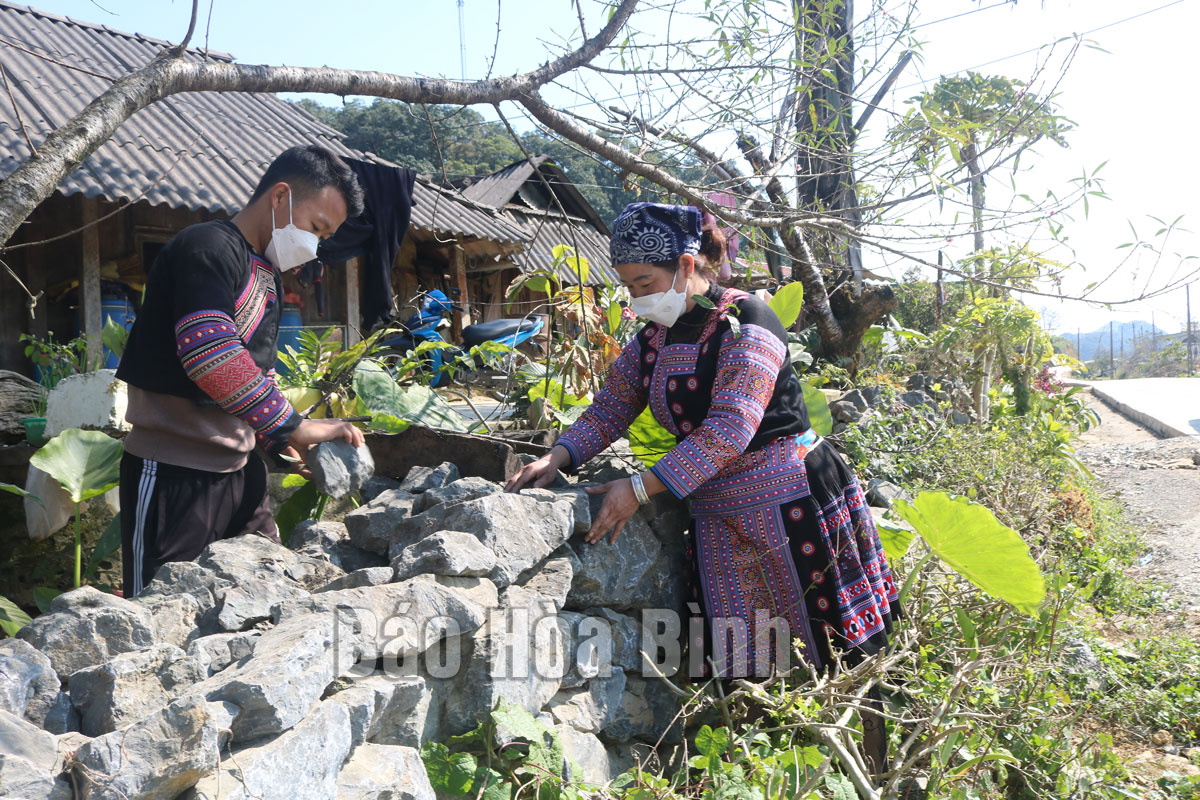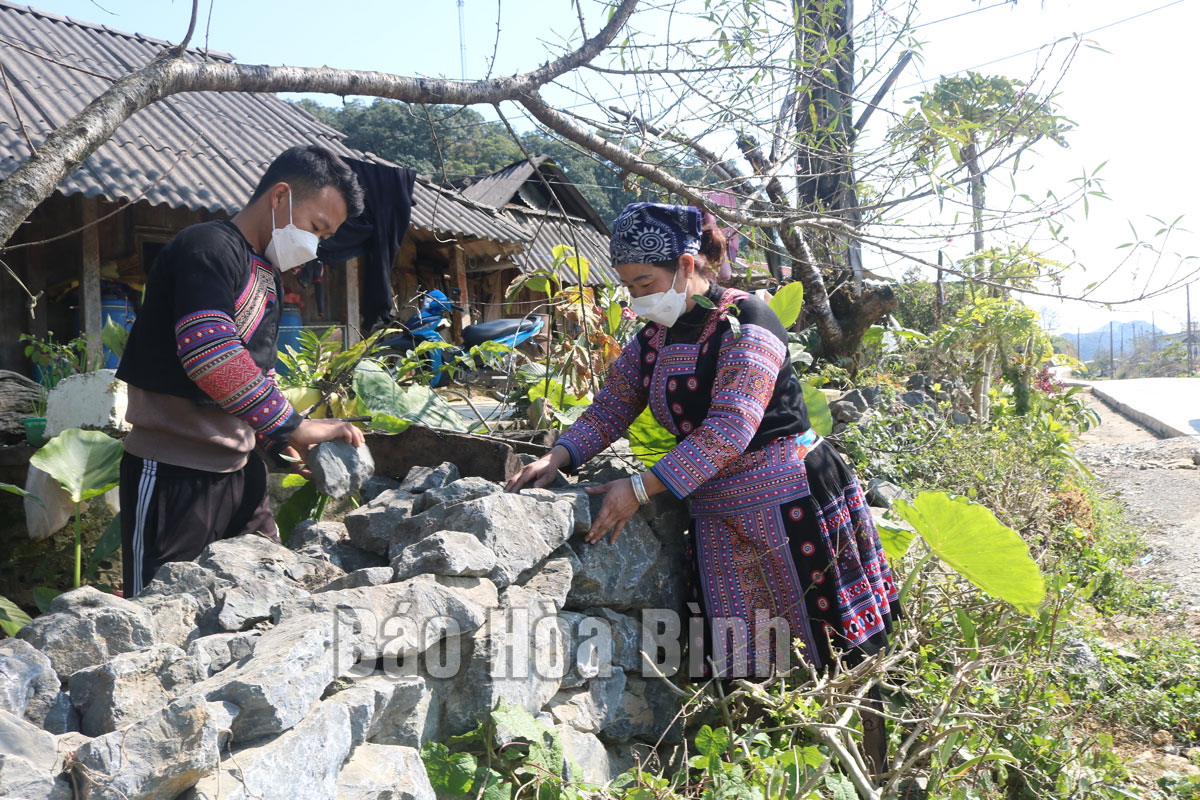



People in Pa Co commune (Mai Chau district) work to conserve rock fence - a unique architectural trait of Mong ethnic people.
Mong people in Pa Co commune mastered a slab arrangement technique to build fences surrounding their houses and farming land so as to demarcate areas between families and prevent cattle and poultry from damaging crops and other assets.
The technique is facing risks of falling into oblivion. After a fact-finding trip in Dong Van district of Ha Giang province, the farmers' associations of Mai Chau district and Pa Co commune called on members and local people to restore the fences in Cha Day.
Afterwards, 2,000 m of fences was built from about 1,500 cu.m of rock.
Rough slabs of multiple shapes and sizes were meticulously arranged by hand, firmly sticking together without the use of any adhesives. With the nimble hands of men in Mong ethnic group, the fence remains stable weathering the test of time.
Building a stable and appealing fence requires skills, diligence and carefulness as well as an aesthetic sense. The rocks need to be placed in an accurate and appropriate way. The fence’s base must be built with large rocks to ensure stability while flat and nice looking ones have to be chosen for the central part in order to make a smooth surface, creating artistic works indigenous to the mountainous commune of Mai Chau district.
Sung A Chia, head of the Pa Co farmer association, elaborated that some families retain their ancient fences but the works are scattered and need constant repairing. Local people showed their support when authorities called on them for the rebuilding work.
The fences were built with the use of the traditional method and widened by 40 cm to become steadier, attracting many tourists.
The farmers' associations of the district and Pa Co district will continue to multiply the model in other residential areas and villages in an effort to promote tourism in association with Mong ethnic group’s cultural identity conservation and development./.